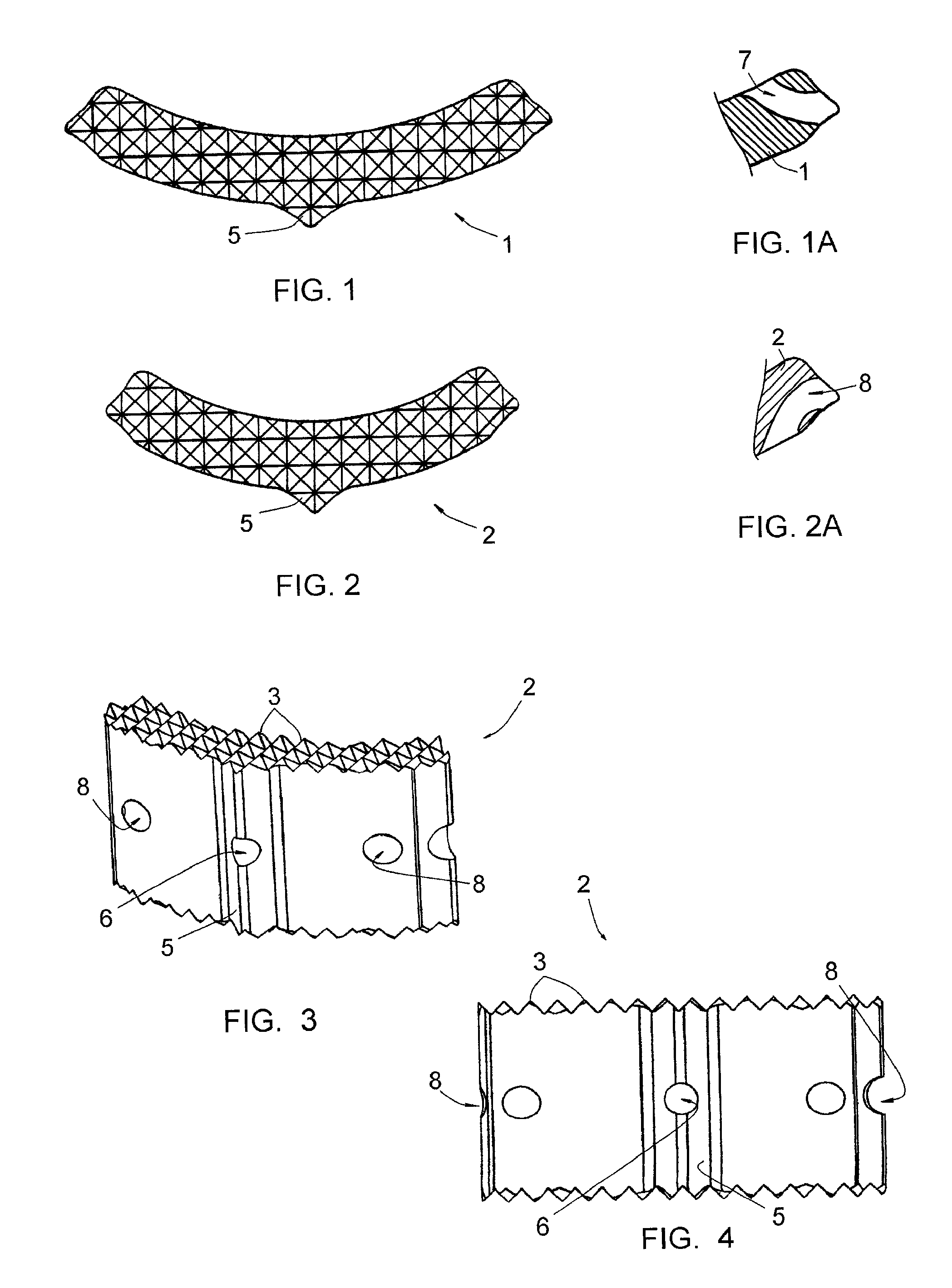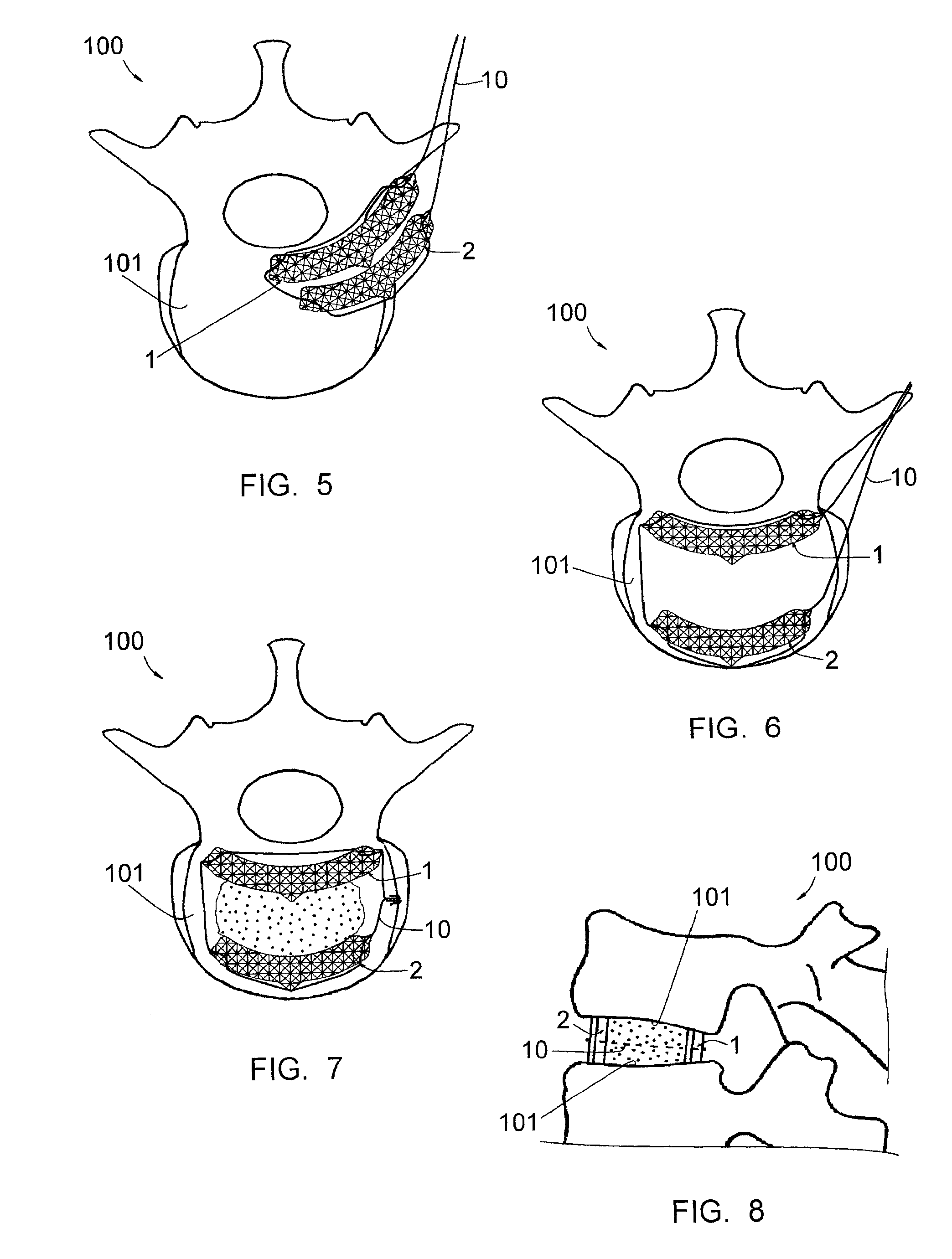Intervertebral implant to immobilize one vertebra relative to another
a technology of intervertebral implants and vertebrae, which is applied in the field of intervertebral implants, can solve the problems of relative risk of implementation, inability to use spinal vertebrae, and insufficient satisfaction of the vertebral fusion obtained, and achieves the effect of convenient introduction
- Summary
- Abstract
- Description
- Claims
- Application Information
AI Technical Summary
Benefits of technology
Problems solved by technology
Method used
Image
Examples
Embodiment Construction
[0064]FIGS. 1 and 2 illustrate two elongated elements 1, 2 jointly making it possible to form an intervertebral implant for immobilization of one vertebra relative to another.
[0065]As shown by FIGS. 6 to 8, the element 1 is intended to be placed from the posterior side of the vertebral plates 101 of two vertebrae 100. It has a length greater than that of the element 2, itself intended to be placed from the anterior side of these plates 101, and has a height smaller than that of said element 2. It appears in FIG. 8 that the respective heights of the elements 1 and 2 are such that these elements make it possible, once placed between the plates 101, to replace the vertebrae 100 in a position of anatomic curvature.
[0066]In reference again to FIGS. 1 to 4, it appears that each element 1, 2 has a curved shape and a reduced width, this width being less than 1 cm. At its edges, each element 1, 2 defines two curved longitudinal surfaces opposite each other, intended to come into contact with...
PUM
 Login to View More
Login to View More Abstract
Description
Claims
Application Information
 Login to View More
Login to View More - R&D
- Intellectual Property
- Life Sciences
- Materials
- Tech Scout
- Unparalleled Data Quality
- Higher Quality Content
- 60% Fewer Hallucinations
Browse by: Latest US Patents, China's latest patents, Technical Efficacy Thesaurus, Application Domain, Technology Topic, Popular Technical Reports.
© 2025 PatSnap. All rights reserved.Legal|Privacy policy|Modern Slavery Act Transparency Statement|Sitemap|About US| Contact US: help@patsnap.com



